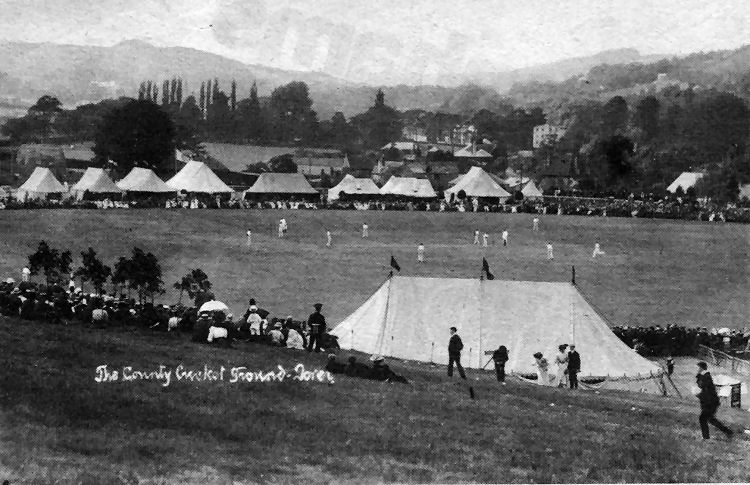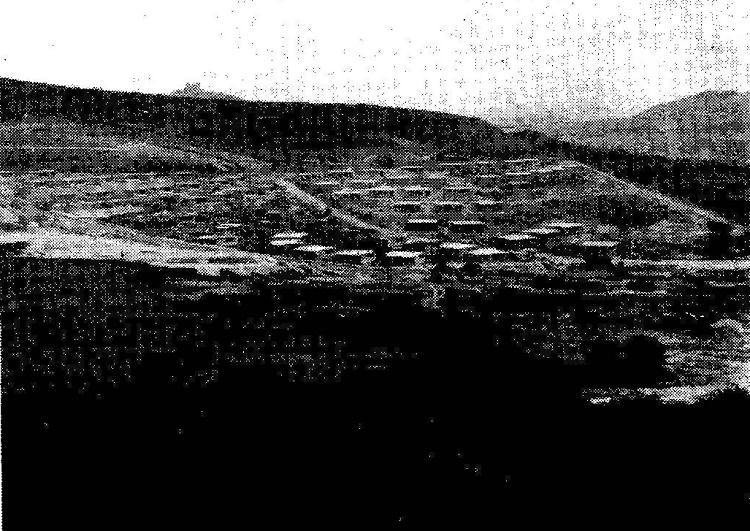Page Updated:- Sunday, 07 March, 2021. |
|||||
 Published in the South Kent Gazette, 24 June, 1981. A PERAMBULATION OF THE TOWN, PORT AND FORTRESS. PART 193.
THE “CLARENCE“ Probably the first local public transport was the fly. This was a hand-drawn carriage to which the proprietor gave the name the "Clarence “ because, it Is said, the Duchess of Clarence, who was staying in Dover at the time, was the first to make use of it, early in the 19th century. Sedan chairs and donkey chairs preceded the introduction of pony chaises, the sedans being quite popular with ladies going to evening parties. Although public transport was scanty until well into the 19th century the streets of Dover were by no means empty of traffic for, in the early years of the century, Dover was at its peak as a seaside town and many members of noble families were to be seen driving about the town in their carriages drawn by as many as four horses. That used by the Archbishop of Canterbury when he came to Dover on one occasion, to conduct a confirmation service, had six horses.
THE “PIONEER“ Horse-drawn buses ran between the railway stations and the principal hotels but public transport within the present-day meaning of that term, to serve purely local needs, did not arrive until 1881 when Back’s Omnibus began to run between the South-Eastern Railway Station at Beach Street and Buckland Bridge. But, as earlier stated, Dover became the first town in the South of England to run a municipally-owned tramway service and was one of the first to see motor buses in regular use. The first bus, steam-powered, to come to Dover was the “Pioneer“ which arrived on 26th June, 1899. The service was operated by the East Kent Motor Bus Company Limited, of which Mr Harris Stone was the chairman and Mr J. Bettridge, clerk of St Margaret’s Parish Council, the secretary. On one of her trial runs she made the journey from Bay Hill, St Margaret’s, to Dover Town Hall, in 40 minutes, with stops to nick up luggage in the village and to allow photographs of the historic occasion to be taken.
Chapter XVIII
CHANNEL TUNNEL The Channel Tunnel Company’s experimental works near Dover were started in 1880 on a large fiat area that was created west of Shakespeare Cliff in 1843, during the construction of the South Eastern Railway by the blowing down of the Round Down Cliff. This was an unwanted projection between Shakespeare Cliff and Abbot’s Cliff. Nine tons of gunpowder were used to mine this cliff, three chambers, going 60ft inwards, being hewn in the base of the cliff. It was exploded by electricity—there was no loud report, but a deep rumbling and tremor of the earth—and then a mass of chalk, 400ft high and 300ft in width, slowly slid forwards into the sea. The flagstaff on the summit, it is recorded, remained in position as the great cliff slide took place, and at the finish stood up out of the sea. It was calculated that 1,500,000 tons of chalk fell part in the sea and part on shore, covering an area of 18 acres. The cost of the operation was £9,000. Such interest was taken in the work that the leading scientists of the day were present, the Railway Directors attended, and soldiers had to be used to keep spectators out of the danger zone. On the other hand, it is said that many Dover people were so afraid that they left Dover in the opposite direction! On this area, on 16th July, 1880, the Channel Tunnel Company began experimental operations. They sank a shaft down into the grey chalk, which was believed to be impervious to water, and had driven a tunnel 6,308ft under the sea, before work was stopped on 4th August, 1886, by order of the Board of Trade. Big efforts were made to create public interest. In 1881, Sir Edward Watkin invited a large gathering of distinguished men to visit the tunnel, and there was a banquet at the Lord Warden Hotel. In 1882, Mr and Mrs W. E. Gladstone descended to the tunnel. After work was stopped a few men were employed fen: maintenance, two of whom were suffocated in 1893. Later ideas for a Channel tunnel provided for a starting point much further inland.
DEFENCE FEARS The Channel tunnel idea began with the great Napoleon before the days of railways, and it is still popular with many. In 1930, the Government’s Economic Advisory Council, after a year’s deliberation, presented a lengthy report. Pour members gave a guarded approval, and one was definitely against the scheme. The report put the cost at over £31,000,000, and was definitely against Government assistance. Earlier, in 1924, the Committee of Imperial Defence had reported that the advantages of a tunnel were not commensurate with its disadvantages from a defence point of view. In 1930, the Imperial Defence Committee considered the matter again, and on the 5th June the Prime Minister Mr Ramsay Macdonald said that the decision of the Government was against a tunnel, and concluded with the quotation: “So long as the ocean remains our friend, do not let us deliberately do anything to destroy its power to help us.“ Later on an open vote of the House of Commons defeated a proposition that a Channel tunnel was desirable by 179 votes to 172. A second abortive bid to build a Channel tunnel was abandoned in 1975 after an encouraging start—and a massive waste of investment. Now there are hopes again of completing a tunnel link to the Continent.

Those were the days . . . when cricket was a gentlemen’s sport and there were few controversies on the pitch or the need for protective headgear. This view of county cricket at Crabble is thought to date hack about 80 years. Beyond the county cricket ground is the unspoilt rural district of River with its farms and haystacks — just across the road from the grounds — parkland, and the only major industries were brick-making, corn-milling and paper-making. The Crabble Athletic Ground (was provided by private enterprise, being laid out in 1896 and was eventually acquired by the town for £5,500, which represented about half the original cost. The upper football ground was laid out by the old Dover Corporation in 1930. Long before the Athletic Ground Syndicate hit upon the idea of developing the site part of the land was hired for use by the local pioneers of association football. The Syndicate, made up of Messrs F. Finnis, H. Hayward, A. C. Leney and J. Stilwell, purchased all of the Crabble Meadows beyond the railway embankment, from Bunker’s Hill up to Crabble Bridge, in all about 14 acres including the land used for association football, and part of the land was levelled to provide facilities for cycle racing, cricket, football and rugby.

After the Hitler War ended there was an urgent need to house those made homeless by bombs and shells, and to accommodate Dovorians returning to their home town. The authorities selected the best site on farmland above Buckland. To speed up the provision of homes about 450 prefabricated houses were erected. Many came from America and the Commonwealth. The area is now Buckland Estate, part of the built up of area of Dover, but the links with America and the Commonwealth are retained by many of the road names. Melbourne Avenue (seen in the above picture) is an example.
|
|||||
|
If anyone should have any a better picture than any on this page, or think I should add one they have, please email me at the following address:-
|
|||||
| LAST PAGE |
|
MENU PAGE |
|
NEXT PAGE | |